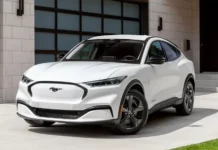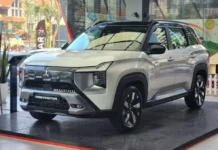For many car owners in Vietnam, a car is not just a means of transportation, a daily rain, and sun shelter, but also a valuable asset. Therefore, they always want to take care and maintain their car carefully so that it is always as new and operates smoothly, with less damage. To achieve this, there are many things that car owners need to do, one of which is changing the engine oil.
Changing engine oil sounds simple, but not every car owner does it correctly. In fact, many car owners still mistakenly believe that the more expensive the oil they use for their car, the better it is, or that if their car is less used, they don’t need to change the oil regularly. These misconceptions not only cost car owners unnecessary money, but can also cause damage to the engine, leading to huge repair and replacement costs. To avoid this, car owners should know the common misconceptions about engine oil.

The more expensive the engine oil, the better it is
Car engine oil is essentially a lubricant used for the engine. Car engine oil consists of two main components: base oil and additives. These additives help the oil have properties that meet viscosity criteria. Therefore, each type of oil will have different levels of quality.
The price of engine oil will depend on many factors from the manufacturer. The more expensive the oil, the more features, advanced technology, or superior additives it possesses. However, not all expensive and high-quality oils are suitable for every type of car.
When changing oil, car owners should not only look at the price, but also pay attention to the manufacturer’s recommendations and see if that oil is suitable for their car. In addition, car owners should also consider the age of the car, their own economic conditions, as well as the purpose and conditions of use of their car to choose the right engine oil. For example, if the car regularly runs in a place with low temperatures, a different oil should be used compared to a car in a hot and sunny area; a car used for business purposes, running long distances with high frequency should not use the same oil as a car that only runs around in the city.
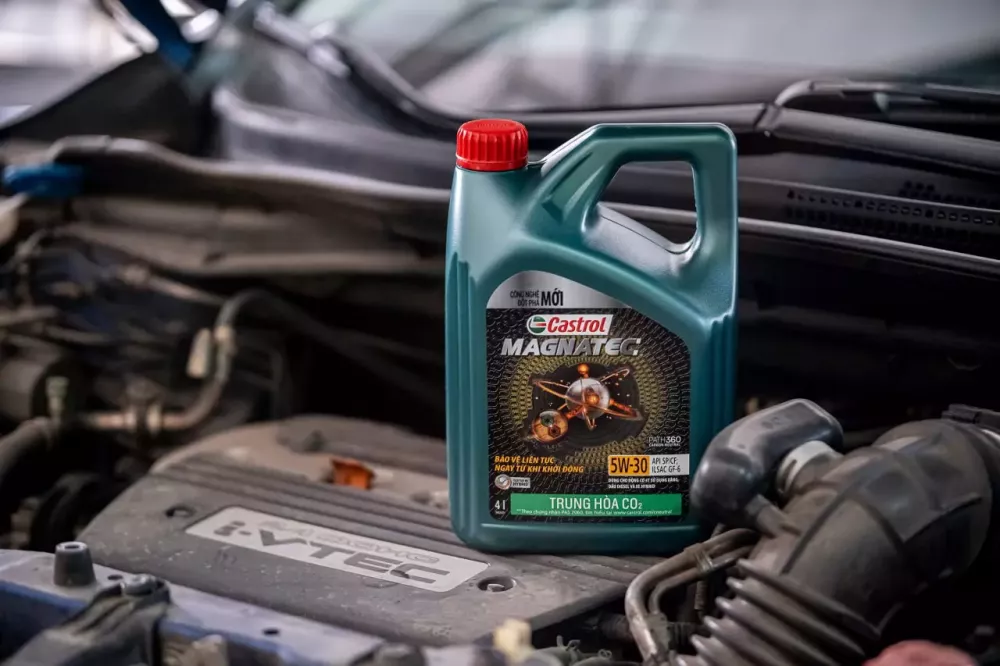
Castrol MAGNATEC 5W-30 API SP is a fully synthetic oil with the ability to reduce wear and tear by up to 50% in both the warm-up and run-stop phases, as well as save fuel when operating in traffic conditions, which is very suitable for the traffic situation in Vietnam.
The thinner the engine oil, the more powerful the car runs
On the engine oil bottle, we often see signs like 0W, 5W or 15W. The number before the letter “W” represents the viscosity of the oil, which indicates how thick or thin the oil is at the engine’s startup temperature. The smaller the number, the thinner the oil and the higher its flowability and circulation at the engine’s startup temperature. With oil of a smaller number, when the engine starts, the oil will circulate quickly and easily, thereby shortening the time to reach lubrication points in the engine. The purpose of this is to protect the engine right from the start and help the car start smoothly and save fuel, rather than making the car run more powerful as many people mistakenly believe.
Thick engine oil is harmful to the engine
Engine oil has two important parameters: performance grade (also called quality grade or quality level) API and viscosity grade (SAE). Among them, the SAE viscosity grade of the American Society of Automotive Engineers represents the consistency or fluidity of engine oil, for example, SAE 30, SAE 40 or SAE 50. The larger the number, the denser the oil and the better it performs at high temperatures.
Thick engine oil has the disadvantage of making it difficult to start the engine when the outside temperature is low. However, this phenomenon does not occur in hot summer weather conditions. Instead, thick engine oil like SAE 50 ensures that the engine does not get too hot when the car operates continuously for a long time. Therefore, not all thick engine oils are harmful to the engine. If you frequently drive long distances in hot weather conditions or use an old car with high mileage, you should consider using thick engine oil for your car.
Engine oil for which type of car is only used for that type of car
Car engine oil is categorized into many different types based on its composition and quality. Generally, engine oil is divided into five basic types: mineral base oil, high-quality mineral base oil, fully synthetic oil, semi-synthetic oil, and oil for cars with high mileage. In other words, engine oil is not categorized by car type such as sedan, SUV, or hatchback. Therefore, the belief that oil for sedans cannot be used for SUVs or vice versa is completely wrong.
Less driving means less frequent oil changes
According to the manufacturer’s recommendations, car owners should change the oil according to time or mileage intervals. Therefore, some people mistakenly think that if their car is driven less, or has not reached the recommended mileage, they do not need to change the oil. For example, some people only drive around the city or only go to their hometown on weekends, so they only drive a few thousand kilometers in a year. However, this is a very dangerous misconception of some car owners.
The lubricating oil itself is not necessarily damaged when the car is driven less or not used for a long time. However, when the car is not driven regularly, excess moisture inside the engine will gradually accumulate. The excess moisture combined with the engine oil will change the viscosity of the oil and cause it to deteriorate. At that point, the engine oil will no longer have optimal lubricating capabilities, leading to unnecessary wear and even engine damage.
Therefore, for cars that are driven less, it is still necessary to change the oil regularly according to the manufacturer’s recommendations. Currently, some car manufacturers recommend changing the oil every 6 months.
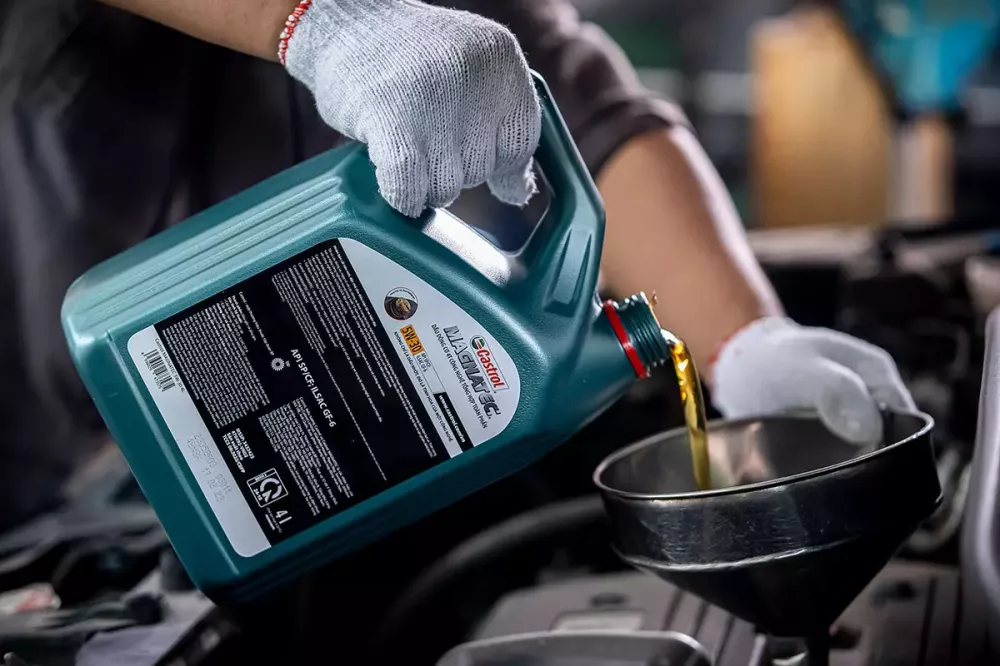
Even cars that are driven less should still have regular oil changes to ensure the oil quality
Older engines should use high-quality oil
As mentioned above, engine oil is generally divided into 5 main types: mineral base oil, high-quality mineral base oil, fully synthetic oil, semi-synthetic oil, and oil for cars with high mileage. Among them, fully synthetic oil is also the most expensive and highest quality.
Compared to regular oil, fully synthetic oil is refined to remove more impurities during the refining process. In addition, this type of oil is supplemented with high-performance artificial compounds and additives to keep the engine clean, protect against damage. Although it is better, fully synthetic oil is not necessary for all types of engines. In fact, not all engines need to use this type of oil. Even fully synthetic oil may lack the necessary features for some types of engines. For example, for older cars, it is better to use regular oil rather than fully synthetic oil.
“Everything you need to know” about engine oil changes
When owning a car, car owners need to learn some necessary information to take care of their beloved car properly and avoid unnecessary costs. Information about engine oil and oil changes is a typical example.
Important engine oil parameters to know
As mentioned, car engine oil has two important parameters: API performance grade and SAE viscosity grade, specifically as follows.
API performance grade
The quality grade of gasoline engine oil is denoted by the letter “S,” for example API SA, SB, SC, etc. Meanwhile, the quality grade of diesel engine oil is denoted by the letter “C,” for example API CA, API CB, API CC, API CD. The letters after “S” or “C” are used to distinguish the different levels of quality and are ranked according to the order of the English alphabet. The further the letter is, the higher the quality and the more expensive the oil is, for example, API SC oil has a higher quality than API SA oil.
SAE viscosity grade
The SAE viscosity grade represents the consistency or fluidity of engine oil and is usually accompanied by numbers such as 30, 40, or 50. The larger the number, the thicker the oil and the better its lubricating ability, and vice versa. These viscosity grades are determined at the average temperature of the engine oil during operation, which is 100 degrees Celsius, and are called single-grade viscosity at high temperature.
W symbol
Engine oil viscosity naturally changes with temperature. Therefore, oil will thicken at low temperatures and thin out at high temperatures. Single-grade oils only meet viscosity requirements at high temperatures for engine lubrication. In contrast, at low ambient temperatures, single-grade oils can thicken and cause difficulties in engine starting. That is why multigrade oils with symbols like SAE 15W-40, SAE 20W-50, or SAE 10W-30 were developed and are becoming increasingly popular.
The letter “W” is an abbreviation for “Winter,” indicating the engine’s ability to start in cold weather. The number before the letter “W” indicates the temperature range at which the multigrade oil helps the engine start well. This temperature range is determined by subtracting the number before the letter “W” from 30. For example, SAE 5W-40 oil will help the engine start well at -15 degrees Celsius.
Common engine oils on the market
Currently, there are five main types of engine lubricant on the market, including mineral base oil, high-quality mineral base oil, fully synthetic oil, semi-synthetic oil, and oil for cars with high mileage. Each type of oil will have its own characteristics and is suitable for certain types of cars.
Mineral base oil: This type of oil comes from crude oil. Then, the oil is refined to remove impurities and blended with various chemical additives. These additives include detergents to neutralize dirt, anti-oxidants to inhibit metal corrosion, and anti-foaming agents to prevent air bubbles. This is the cheapest type of engine oil.
High-quality mineral base oil: This is the standard oil for new cars. All leading brands have this type of oil. High-quality mineral base oil will have different viscosity levels. Car manufacturers usually specify 5W-20 or 5W-30 oil for low temperatures and 10W-30 oil for higher ambient temperatures. These three types of oil can be used for most light-duty car models on the market.
Fully synthetic oil: This type of oil is recommended for high-tech engines, luxury cars, or cars that frequently tow or carry heavy loads. Fully synthetic oil has better flowability at low temperatures and maintains maximum viscosity at high temperatures. This is the most expensive and highest quality type of oil, but not all engines need to use it. In fact, fully synthetic oil may lack the necessary features for some types of engines. For example, for older cars, it is better to use regular oil rather than fully synthetic oil.
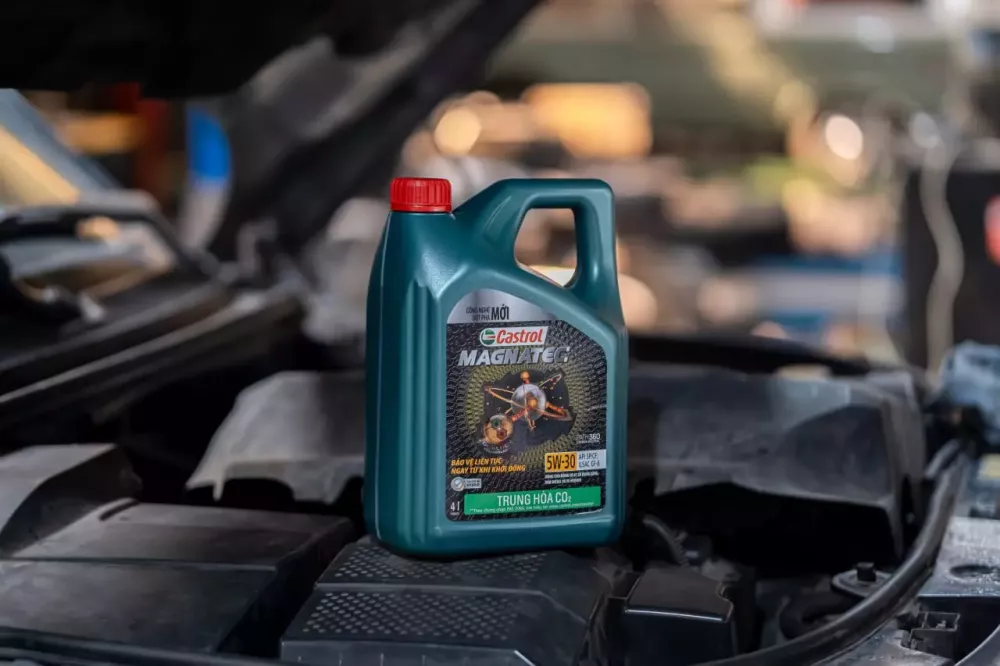
Castrol’s semi-synthetic engine oil
Semi-synthetic oil: This type of oil is a blend of fully synthetic oil and mineral base oil to protect the engine when under heavy load and at high temperatures. This means that they evaporate less, reducing oil consumption and increasing fuel efficiency. People who want to provide additional protection for their engine when carrying heavy loads often use this type of oil. Compared to fully synthetic oil, semi-synthetic oil is cheaper. Compared to high-quality mineral base oil, semi-synthetic oil is sometimes only slightly more expensive.
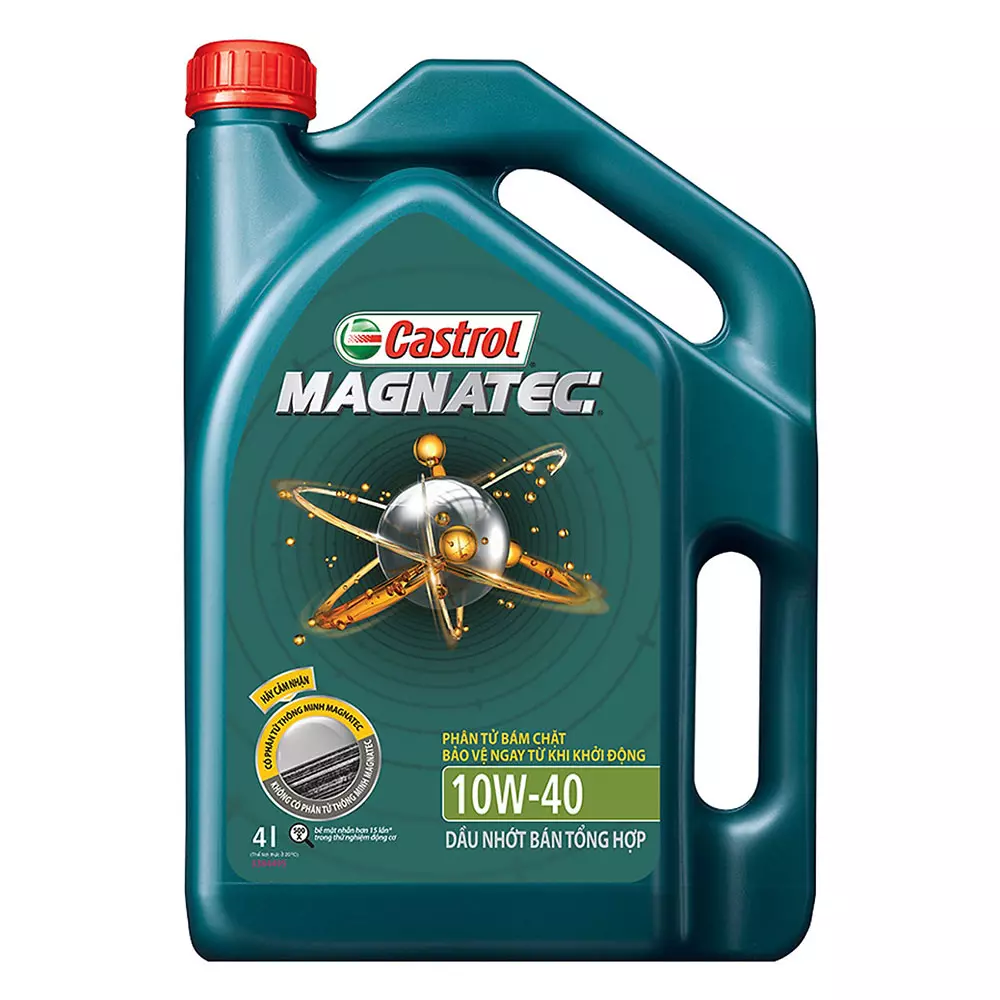
Semi-synthetic engine oil from Castrol
Engine oil for cars with high mileage: This type of oil is used for cars with mileages of 120,000 km or more. This type of oil contains additives and chemical enhancers that can cause the seals, as well as the inner and outer rubber seals, to swell, reducing oil leaks and the risk of fire for old engines. If your car is properly maintained and still runs well, this type of oil can be a suitable choice to extend the life of important engine parts and make your car last longer. Engine oil for cars with high mileage can be formulated from mineral base oil, semi-synthetic oil, or fully synthetic oil and will have a similar price to those types of oil.
Engine oil for old cars, new cars, and luxury cars
The first thing car owners need to remember when choosing oil for their engine is to follow the manufacturer’s recommendations. In addition, car owners should also consider some factors after choosing the lubricating oil.
Engine oil for new cars
Newer cars nowadays are equipped with better-engineered engines, so the clearances are very small. Therefore, new cars are recommended to use thin engine oil so that it can penetrate the details easily. If thick oil is used, the engine will not be properly lubricated, causing overheating, wearing out engine parts because the oil cannot penetrate into small gaps, affecting the engine’s lifespan.
Engine oil for old cars
Contrary to new cars, old cars with high mileage should use thick engine oil, such as 15W-40 or 20W-50. Engine oil for cars with high mileage usually has higher viscosity and additional additives to improve oil viscosity. Thanks to that, this type of oil can seal the gaps between pistons and cylinder walls in the engine better and is less prone to leaking through worn crankshaft seals over time. In addition, engine oil for cars with high mileage may also contain higher levels of anti-wear additives to slow down the wear process and better protect older engines.
Engine oil for luxury cars
For luxury cars, manufacturers have stricter requirements for lubricating oil. Luxury or high-performance cars are often advised to use higher-grade oils than regular cars to optimize engine performance. Most luxury cars have larger engine power compared to regular cars. In addition, the cost, technology, and engine manufacturing materials of luxury cars are also different from regular cars.
Due to the higher pressure and intensity of luxury car engines, they also require better lubrication, higher anti-wear properties, and more effective handling of contaminants. Therefore, for luxury cars, users should choose oil with a higher grade of quality, fully synthetic oil is recommended.
Engine oil change intervals
Engine oil change intervals will depend on many factors such as manufacturer’s recommendations, the type of oil the car is using, operating conditions, or the age of the car. Generally, about every 3-6 months, users should change the oil after driving the first 3,000-5,000 kilometers. For older cars, cars that frequently drive long distances, or operate in dusty environments, the oil change interval may be shortened.
In addition, car owners can rely on the information on the oil bottle to determine the oil change interval for their car. For example, mineral base oil has an oil change interval of about 5,000 kilometers. For semi-synthetic oil, it is recommended to change the oil every 7,000-8,000 kilometers. As for fully synthetic oil, the oil change interval will be longer, about 10,000-15,000 kilometers.
In general, the choice of oil and the interval for oil changes depend on the type of car you are using, your own economic conditions, and the operating conditions of your car. For those who are still unsure and do not know which type of oil to choose, they can consider using the latest Castrol MAGNATEC 5W-30 API SP engine oil, which is suitable for modern traffic environments.

Castrol MAGNATEC 5W-30 API SP, with DUALOCK technology, protects the engine right from the start, even with modern start-stop technology equipped vehicles
Castrol MAGNATEC 5W-30 API SP is an engine oil that applies DUALOCK technology with breakthrough molecules that adhere to the metal surfaces of engine parts, tightly bind together, and form a strong oil film to protect the engine, effectively reducing wear and tear. Castrol MAGNATEC 5W-30 API SP helps reduce wear and tear by up to 50% in both the warm-up and run-stop phases, as well as save fuel when operating in traffic conditions, which is very suitable for the traffic situation in Vietnam. In addition, Castrol MAGNATEC 5W-30 API SP has also been tested on hybrid cars – a type of environmentally friendly vehicle that is a trend in many countries around the world, including Vietnam. Thanks to that, the engine is continuously protected right from the start, even with vehicles equipped with modern start-stop technology.





